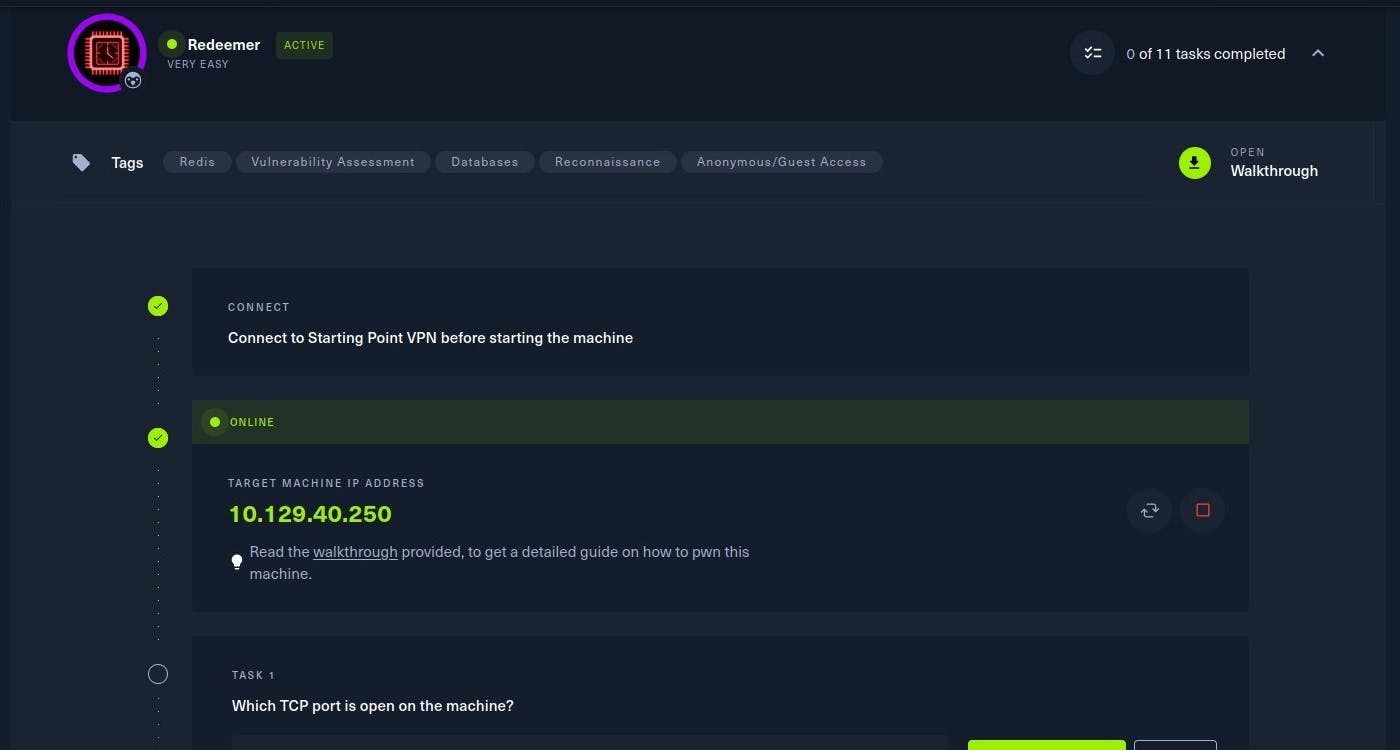Today Tasks -
Solve 1 box on HackTheBox
Python data structures
HackTheBox
I choose a very easy box called "Reedemer". It has 11 Tasks which are related to recon, database, guest access, Redis.

This lab focuses on enumerating a Redis server remotely and then dumping its database in order to retrieve the flag. In this process, we learn about the usage of the redis-cli command line utility which helps interact with the Redis service. We also learn about some basic redis-cli commands, which are used to interact with the Redis server and the key-value database.
https://www.hackthebox.com/achievement/machine/709925/472
Python Data Structure
List
Python does not have a built in array type, but you can use lists for all of the same tasks. An array is a collection of values of the same type saved under the same name.
Each value in the array is called an “element” and indexing that represents its position. You can access specific elements by calling the array name with the desired element’s index. You can also get the length of an array using the len() method.
cars = ["Toyota", "Tesla", "Hyundai"]
print(len(cars))
cars.append("Honda")
cars.pop(1)
for x in cars:
print(x)
Queues
Queues are a linear data structure that store data in a “first in, first out” (FIFO) order. Unlike arrays, you cannot access elements by index and instead can only pull the next oldest element. This makes it great for order-sensitive tasks like online order processing or voicemail storage.
You can think of a queue as a line at the grocery store; the cashier does not choose who to check out next but rather processes the person who has stood in line the longest.
from collections import deque
# Initializing a queue
q = deque()
# Adding elements to a queue
q.append('a')
q.append('b')
q.append('c')
print("Initial queue")
print(q)
# Removing elements from a queue
print("\nElements dequeued from the queue")
print(q.popleft())
print(q.popleft())
print(q.popleft())
print("\nQueue after removing elements")
print(q)
# Uncommenting q.popleft()
# will raise an IndexError
# as queue is now empty
Stack
stack = []
# append() function to push
# element in the stack
stack.append('a')
stack.append('b')
stack.append('c')
print('Initial stack')
print(stack)
# pop() function to pop
# element from stack in
# LIFO order
print('\nElements popped from stack:')
print(stack.pop())
print(stack.pop())
print(stack.pop())
print('\nStack after elements are popped:')
print(stack)
# uncommenting print(stack.pop())
# will cause an IndexError
# as the stack is now empty
Dictionary
It is like hash tables in any other language with the time complexity of O(1). It is an unordered collection of data values, used to store data values like a map, which, unlike other Data Types that hold only a single value as an element, Dictionary holds the key:value pair. Key-value is provided in the dictionary to make it more optimized.
Indexing of Python Dictionary is done with the help of keys. These are of any hashable type i.e. an object whose can never change like strings, numbers, tuples, etc. We can create a dictionary by using curly braces ({})
phonebook = {
... "bob": 7387,
... "alice": 3719,
... "jack": 7052,
... }
>>> squares = {x: x * x for x in range(6)}
>>> phonebook["alice"]
3719
>>> squares
{0: 0, 1: 1, 2: 4, 3: 9, 4: 16, 5: 25}
